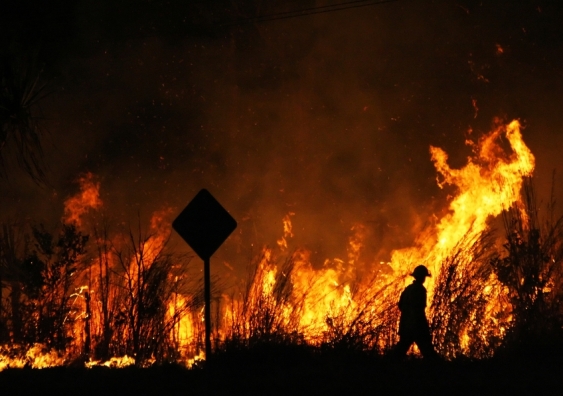Opening the Keys of Bushfire Threat Analysis: The Duty of a BAL Report
Opening the Keys of Bushfire Threat Analysis: The Duty of a BAL Report
Blog Article
How BAL Report Impacts Shrub Fire Protection Procedures
In the realm of bush fire security, the Building Attack Level (BAL) report stands as a crucial tool that substantially influences the security and resilience of properties in fire-prone locations - BAL Report. The impact of a BAL assessment expands far past plain documentation; it works as the keystone for determining the suitable building and construction criteria and fire protection steps essential to mitigate the dangers presented by bushfires. As communities face increasingly severe fire seasons, recognizing exactly how the BAL report forms these safety measures becomes vital for contractors, policymakers, and homeowners alike
Understanding the Bushfire Assault Level

Importance of BAL Report Assessment

Additionally, the BAL record analysis functions as a fundamental action in abiding with lawful commitments and demands connected to bushfire defense. Local councils and authorities frequently mandate the submission of a BAL report as part of the planning and structure authorization procedure to make certain that residential properties are appropriately guarded against bushfire threats. Failing to conduct an extensive BAL record evaluation can result in insufficient protection measures, leaving homes at risk to devastating bushfire events.
Building And Construction Criteria Based on BAL
A comprehensive understanding of the Bushfire Strike Level (BAL) allows homeowner to apply construction requirements tailored to their certain threat profile. Building and construction requirements based upon BAL are critical in reducing the effect of bushfires on buildings. The BAL rating categorizes the potential threat a property faces throughout a bushfire on a scale from BAL-Low to BAL-FZ (Flame Zone) Each BAL level matches to particular construction requirements described in the Australian Basic AS3959-2018 Construction of Structures in Bushfire-Prone Areas. For instance, buildings categorized as BAL-Low you can try these out may just require standard actions such as clearing particles and maintaining yards, while those in higher BAL groups need more durable actions like ember displays, fireproof products, and secured home windows. Following these construction standards not just improves the architectural resilience of the home yet also improves the total security of locals during a bushfire occasion. Residential or commercial property proprietors should meticulously consider their BAL ranking and conform with the equivalent building standards to effectively protect their homes and residents.
Carrying Out Fire Protection Actions
With the foundation of building requirements based upon Bushfire Assault Level (BAL) in place, the focus now shifts towards the sensible execution of fire protection procedures to strengthen residential or commercial properties against bushfire risks. Executing fire defense measures involves a combination of more info here passive and energetic approaches to boost the strength of structures in bushfire-prone areas. Passive actions consist of using fire-resistant structure products, setting up ash guards on vents, sealing spaces in walls and roofs, and keeping a clear area around the property totally free from flammable vegetation. Energetic measures include having firefighting tools readily available, such as hose pipes and water pumps, in addition to creating a defendable room around the home by getting rid of plants and having a well-kept yard. Additionally, creating an emptying strategy and guaranteeing all locals understand emergency treatments are vital components of effective fire defense actions. By integrating both passive and energetic strategies, residential or commercial properties can significantly lower their vulnerability to bushfire occurrences and increase the safety and security of passengers.
Safeguarding Homes Versus Bushfires
Successfully securing homes against the damaging effects of bushfires requires a aggressive and thorough approach to fire protection measures. In addition, sealing vents and voids to protect against ash invasion, as well as incorporating fireproof doors and home windows, can aid fortify the home's defense against bushfires. By accepting an aggressive position and integrating these protective actions, home owners can dramatically boost their possibilities of protecting their homes versus bushfires.
Verdict
To conclude, the Bushfire Assault Level (BAL) record plays an important role in determining the essential defense procedures against i loved this bushfires. By assessing the BAL, construction requirements can be tailored to minimize the threats and make certain the safety and security of homes in fire-prone locations. Applying fire security steps based on the BAL report is vital in protecting residential properties from prospective bushfire risks. It is necessary for homeowners to prioritize BAL evaluations and follow advised building and construction criteria to improve bushfire durability.
In evaluating bushfire danger to properties, understanding the Bushfire Assault Degree (BAL) is a crucial element for carrying out effective security procedures. Overall, a clear understanding of the Bushfire Attack Level is essential for applying sufficient security measures and minimizing the influence of bushfires on properties.

Report this page